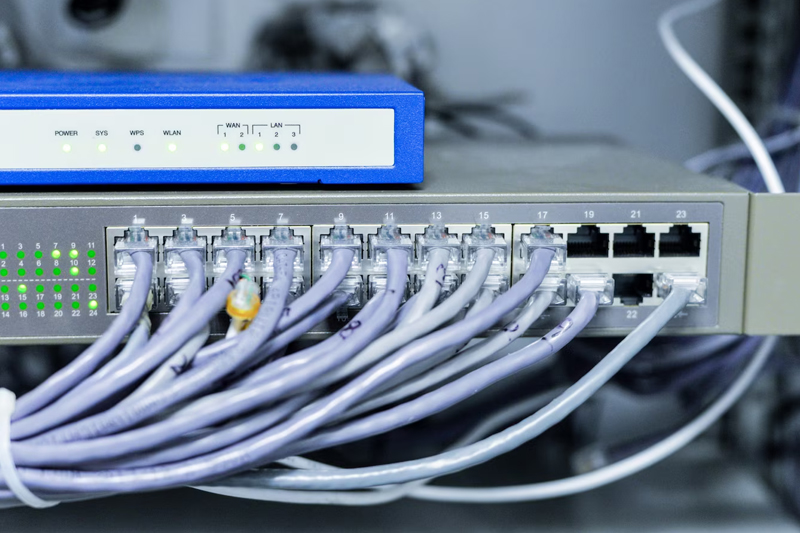
+974 55826314 info@nobelsecurity.com.qa

Patch Cords: Short Ethernet or fiber optic cables used to connect end-user devices (computers, phones, printers) to the structured cabling system.
Networking Hardware:
Labeling and Documentation: Structured cabling systems are meticulously labeled and documented to facilitate troubleshooting, maintenance, and expansion.
Testing and Certification: After installation, structured cabling systems are rigorously tested using specialized equipment to ensure compliance with performance standards.
Standards and Compliance: Structured cabling systems adhere to industry standards, such as those defined by the Telecommunications Industry Association (TIA) and the International Organization for Standardization (ISO).
Structured cabling refers to a standardized and organized system of cabling and associated hardware used to provide comprehensive telecommunication infrastructure within a building or campus. The primary purpose of structured cabling is to support data, voice, video, and other communication services in a reliable and efficient manner. Structured cabling systems typically adhere to industry standards to ensure compatibility, scalability, and ease of maintenance. Here are the key components and aspects of structured cabling:
Cabling Media:
Connectors and Jacks:
Patch Panels: These are used to terminate and organize the ends of horizontal and backbone cables, allowing for easy connectivity to switches, routers, and other active equipment.
Structured Cabling Pathways:
Wall Outlets and Faceplates: These are installed in workspaces to provide convenient access to network and telecommunications services.
Contact us today to discover how our comprehensive CCTV solutions can enhance your security and provide customized surveillance systems tailored to your specific requirements.
Nobel Security Solutions 2nd Floor, HUB Business Center Al Nasr Street P.O.Box 5583 , Qatar
(+974) 55826314
info@nobelsecurity.com.qa
Copyright © devien all rights reserved.